Many millions of moviegoers will say they “grew up” at the movies, their beloved childhood memories infused with the smell of popcorn and the flickering of projector lights. That’s particularly true of North America’s exhibition industry, which boasts a handful of multi-generation, family-owned companies among its roster of exhibitors and vendors. Yet perhaps, the biggest claim for literally growing up at the movies belongs to Bruce Proctor, president and CEO of Proctor Companies, which in 2021 celebrates its 50th anniversary.
Proctor Companies enters its second half-century as a company that—through its design and creation of concessions facilities and equipment—has had a substantial impact on the way the North American movie theater concession stand looks and feels. The company has its origins, unsurprisingly, in the exhibition world. Founder-to-be Bill Proctor had a high school job running the projector in a small theater in Griswold, Iowa. A stint in the Air Force didn’t shake his love of the industry, and when he got back, he and his wife Zola bought a tiny theater of their own—one that was equipped, as was common at the time, with a soundproof “crying room” where mothers could bring their upset children and still keep track of the on-screen action via a speaker and a glass window. It was in this crying room, closed off to the public, where the Proctors put a crib for little Bruce—who hasn’t left the industry since.
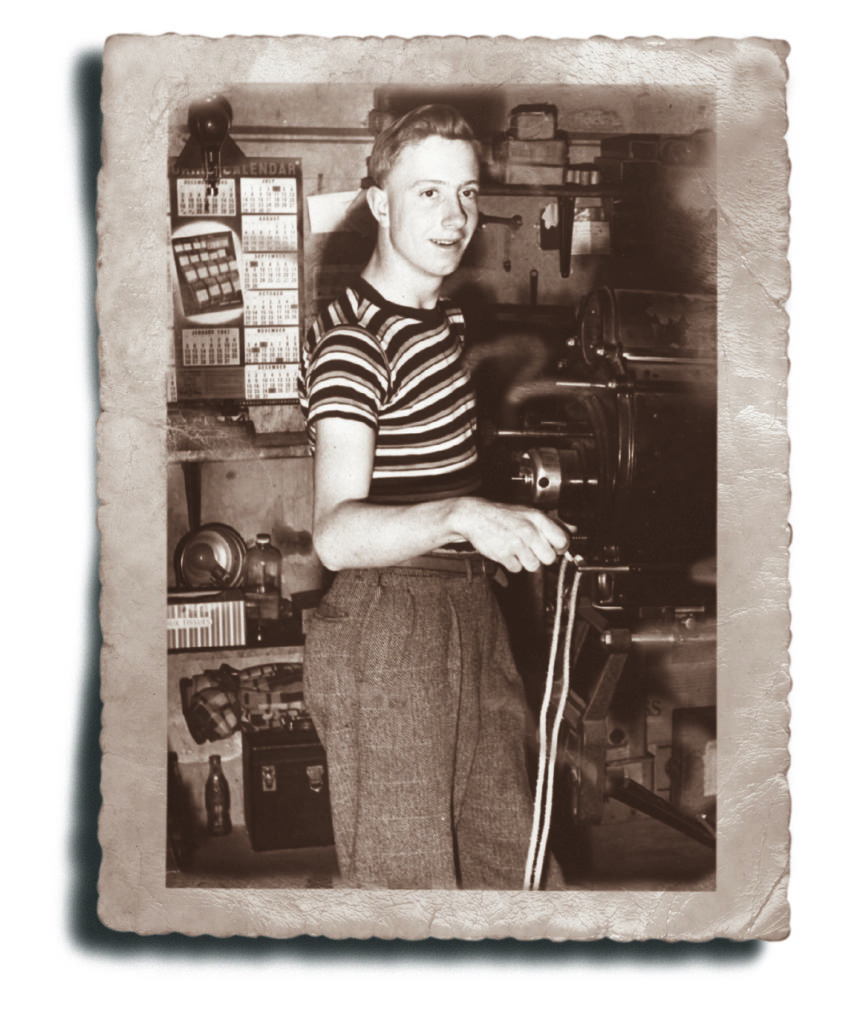
Bill Proctor’s career continued to evolve, with Bruce following in his wake. Bill became the owner and manager of several theaters in Iowa throughout the ’50s and ’60s; among these were drive-in theaters, where Bruce—in second or third grade, he estimates—would help keep things clean by serving on litter patrol. Within a few years came a promotion to the concessions stand, where he had to stand on a box to reach the popcorn kettle. In 1963, Bill sold his theaters—and, having “become known for being particularly good at concessions and operations,” says Bruce, was recruited by Fox Theatres (later part of Mann Theatres) to be their Director of Concessions.
The job was twofold. “In those days,” Bruce says, “there weren’t large companies that specialized in providing the consumables to movie theaters,” so part of his father’s job was overseeing the warehouse that served as a centralized distribution point for Fox concessions. (This included popcorn, which at that time not all theaters popped on-site; Bruce’s high school job was cleaning and restocking Fox’s popcorn facility, which he estimates popped approximately 2,000 pounds of seed per day.) Bill also worked on the theater side, “getting concession stands designed, built, equipped, and installed all over North America.”
Fox wanted to promote Bill and move him to L.A. or New York. Not liking neither option, he decided to strike out on his own and create a business that would merge knowledge gained from the concessions side of the business with what he’d learned as a theater owner and manager. In 1971, Proctor Companies was created with the goal of streamlining and improving the concessions side of the exhibition industry.
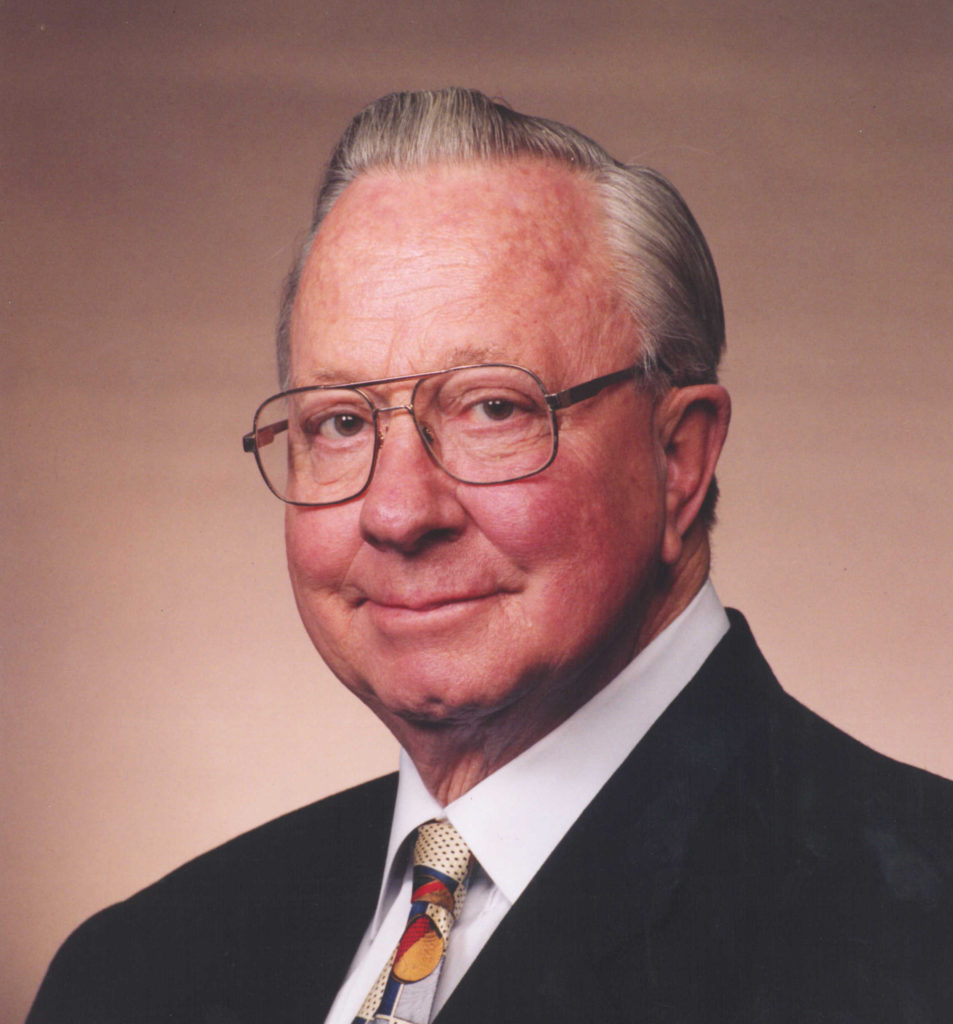
“It was a classical desk in the basement scenario” at first, says Bruce. Through his time at Fox and those early years with his own company, Bill was a “road warrior,” his son recalls, someone who “got his United [Airlines] Million Miler plaque in the ’70s, I suppose. Way back. He was
on the road constantly.” The miles traveled—and the connections made along the way—came to fruition when he got an invitation to pitch a concept to AMC. That concept would set Proctor Companies up to still be in operation 50 years later.
The “Station Concept,” officially developed by Proctor Companies in 1975, looks obvious in retrospect. In 1966, AMC had opened its first multiplex; by the 70s, the multiplex—and AMC, led by Stanley Durwood—were booming. “In the older days, [theaters] would trust maybe one or two cashiers,” says Bruce. That was no longer viable as theaters—and concessions queues—grew in size, a problem Proctor Companies tackled by introducing more points of transaction between patrons and employees. The Station Concept, inspired by the fast food industry, introduced to AMC a “work triangle,” the idea of which was that the employee wouldn’t have to take “more than two or three steps to get any item on the menu and come back to that patron quickly. The faster we can get the customers in and out, the shorter the queues, the more money to the bottom line.”
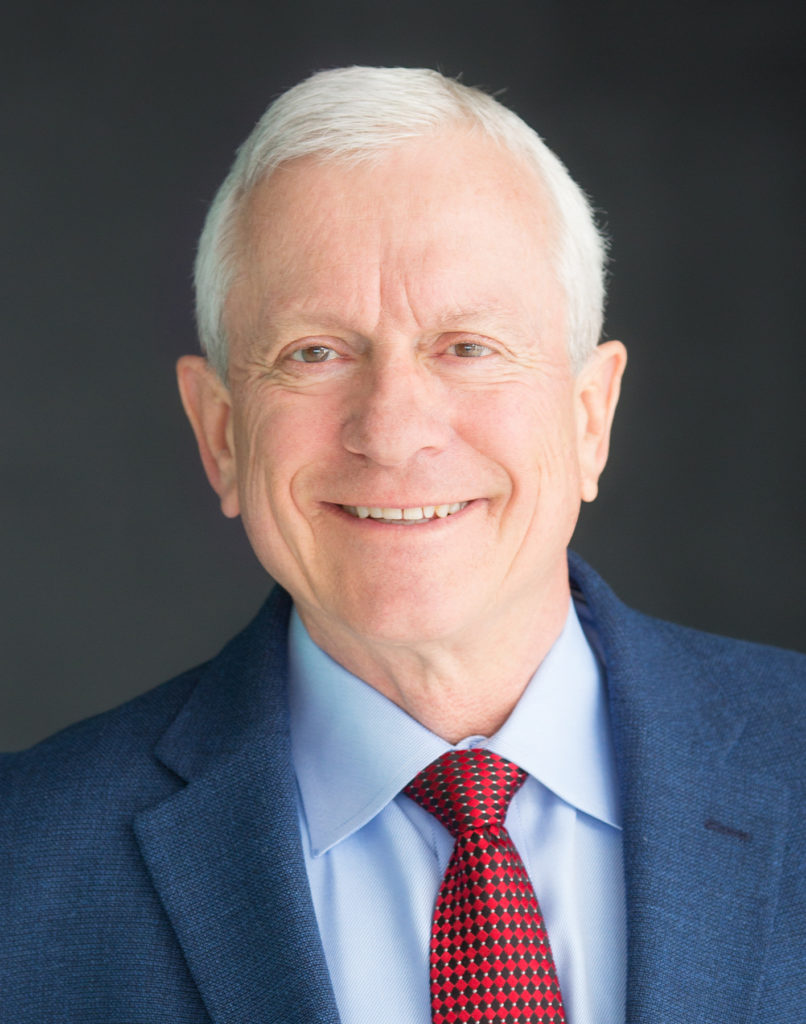
The ’70s saw growth for AMC and Proctor alike. “We kind of grew up together, with AMC,” says Bruce. “Wherever they went, we went.” Bill bought a building for the company and asked Bruce to help get things running. “I said, ‘OK, but just for a couple of weeks.'” It was not, needless to say, just a
couple of weeks. Bill would make a deal with a cinema, and Bruce would set out on the road to install the equipment. “It was the best job in the world,” he recalls. “In those days, at 20 years old, I had a credit card. I traveled the nation. Met a lot of great people in the industry. There was a lot of great satisfaction in meeting the trucks on the first day of the week, and by the end of the week—depending on what the job was—you could see what you’d put together. We were handing over the operating manuals and working with the manager to make sure they knew how to run all the various pieces of equipment.” When a job was done, Bruce would use the hands-on knowledge he’d acquired to suggest tweaks that would better improve the overall experience. Decades later, Bruce hasn’t lost that attention to detail that he honed in his early days with Proctor Companies. “If we don’t improve from one job to the next, we’re not doing our job.”
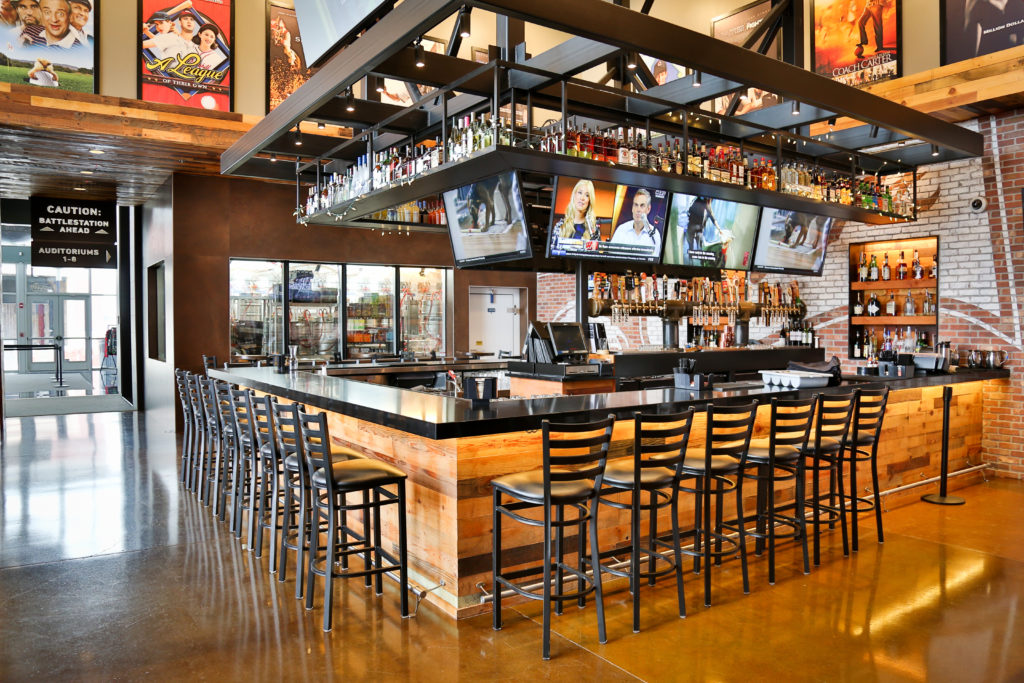
In 1988, Bill Proctor retired and Bruce took over as Proctor Companies’ president and CEO. Bruce, like his father, took inspiration from the world of fast-food for another concept, developed in 1997 for United Artists. Called “Pass Through,” it was—like the Station Concept that cemented Proctor’s relationship with AMC in the ’70s—a response to the continuing physical growth of movie theaters, which again would make wait times longer unless an increasing amount of real estate was given up to concessions operations. “Pass Through” streamlined matters by introducing to United Artists and subsequent cinema chains a back-line (where food is prepared), a mid-line (where food is presented), and a front-line, where customers could complete their transactions and make impulse purchases.
During Bruce’s tenure as president and CEO of Proctor Companies, concessions have continued to evolve at a steady pace. AMC’s wide-scale introduction of recliner seating in the early aughts, he argues, “fed the whole momentum to have dine-in,” because the spacious seats made people want to settle in and eat in addition to providing natural placement for small tables. In 2012, Proctor Companies launched the ProctorID—for “indoor dining”—division, banking on the continued potential of a concessions set-up that allows patrons to spend more time in the theater and more money per transaction. Other concepts over the years include cafeteria-style self-serve concessions (developed for Century Theatres in 2003) and Cinemark’s Grab-n-Go fixtures, introduced in 2015.
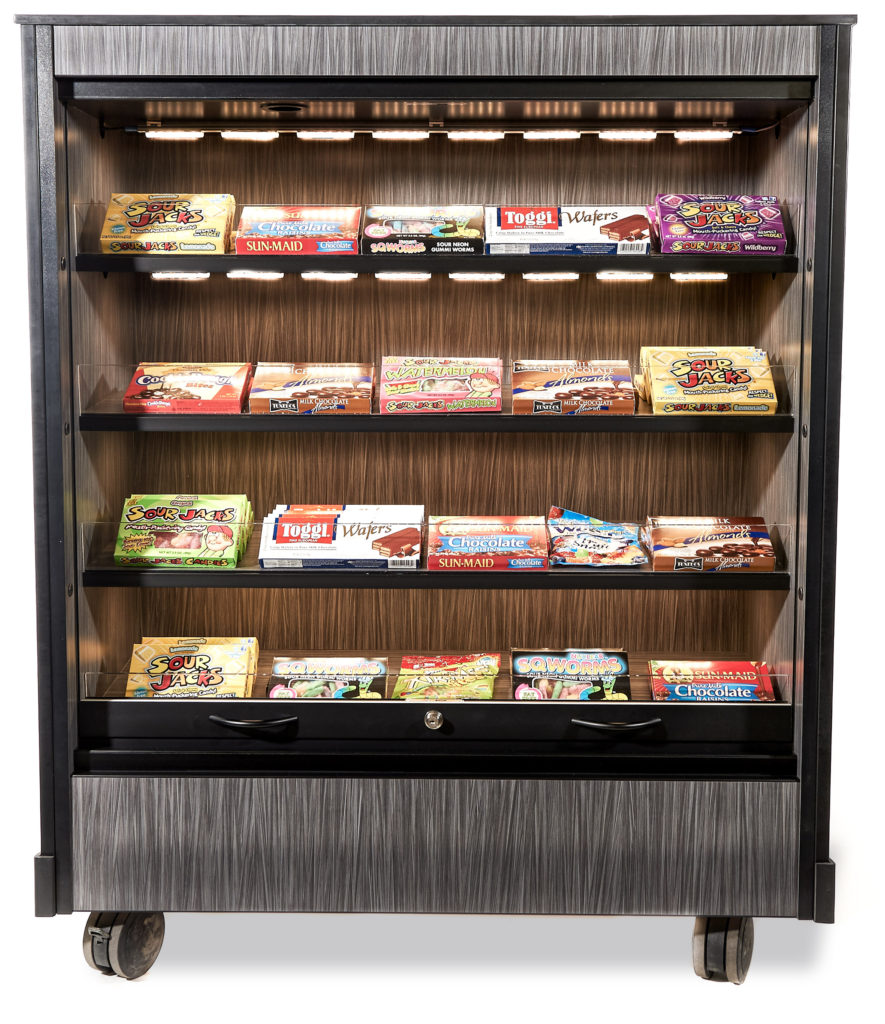
“Pre-Covid there was a big push towards the retailing of our industry,” explains Bruce, with chains including AMC offering a wider variety of items—food and not—for purchase in the vicinity of the concession stand. And the past few years have seen a marked increase in self-serve, with (for example) Coca-Cola Freestyle machines becoming a familiar movie theater presence. “Pre-Covid, at least half of our clients were using self-service soda,” says Proctor. “That would once again speed up the service at the transaction point. But now [with Covid], we can’t do that. It’s going back in the other direction, where there’s more service required from the staffer and less touch. People want contactless if possible.”
In the short term, as Covid keeps theaters in North America shut or at limited capacity, the pandemic’s impact on concessions is clear: An increased interest in mobile ordering, a decline in self-serve, and (in the case of some theaters) a pared-down menu that strips higher-labor, hands-on extended menu items in favor of standard classics like popcorn, soda, and candy. Bruce sees some longer-term changes in the traditional concessions experience in the cards: There will be “more mobile apps,” he believes, a decrease in shared food items, and “more to draw the eye” in terms of lights and graphics, bringing North American operators that choose to go that route more in line with the lavish design to be found in select international markets.
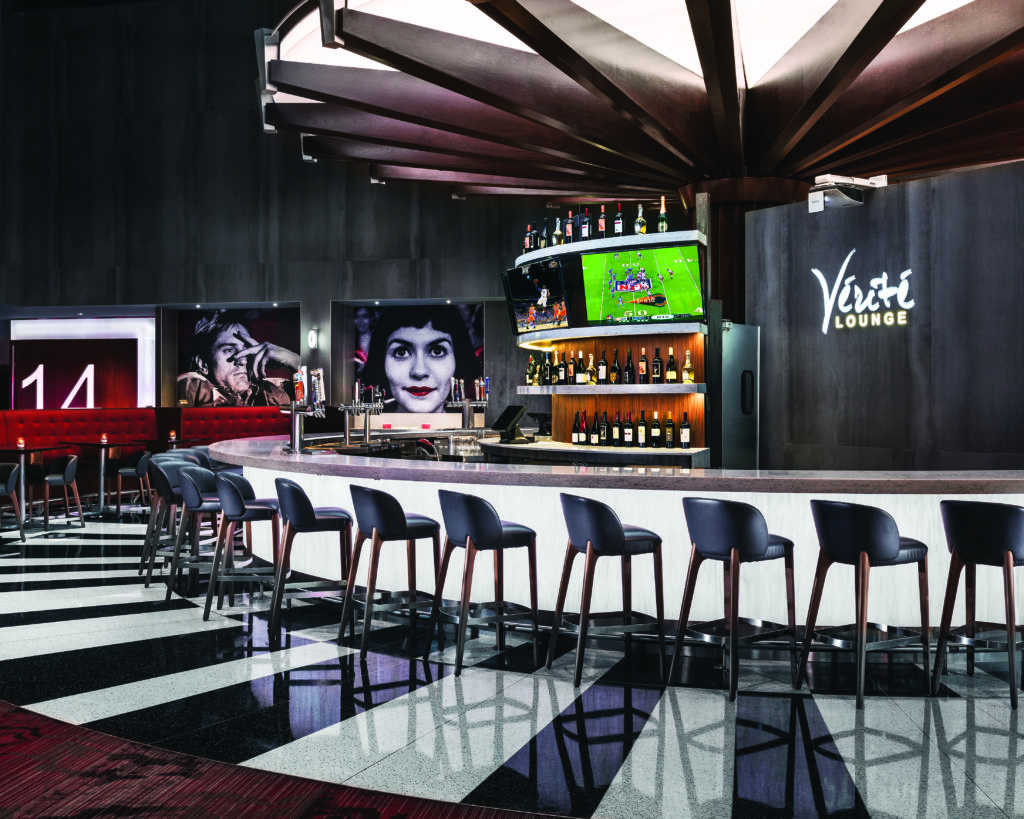
As to more sweeping changes in what and how patrons consume food at the theater—namely, if there will be a shift in the balance between dine-in and more “traditional” concessions—Bruce is rightfully hesitant to give a definitive opinion. “There’s a strong contingent of our industry that believes that most of the profits in food and beverage come from soda, popcorn, and now draft beer,” which require less labor and have higher profit margins than extended menu items. That said, dine-in “get[s] people off the couch.” As patrons return to cinemas post-Covid, “they’re going to want to have a first-class experience with sight and sound in the auditorium. And they want food and beverage to be delivered on time and at least average in quality, if not better.” Ultimately, he emphasizes, the ideal concession stand design depends on the chain—or even the individual theater. “I’ve had people ask me, ‘What’s the perfect concession stand?’ And I can tell you it doesn’t exist…. I build concession stand designs that work really well for one company. Transferred over to another client, they didn’t operate quite the same. They didn’t have nearly the same results.”
Regardless of what direction the concession stand goes in moving forward, Proctor Companies is looking forward to another 50 years of providing for the needs of their clients—pulling from a well of experience that goes all the way back to Bill Proctor’s first movie theater job in Griswold, Iowa. “I think that a lot of the success that we enjoyed in this company came from [my father’s] previous experience,” says Bruce. “We were tuned into thinking like our client. It was easy for him, because he used to be a movie theater owner. That’s how he got the idea for this company, what its platform would be—to provide a one-stop-shop service for other movie theater owners. We try to keep that in mind and think not only as the theater owner. We try to think as the moviegoer, their patrons. The more we can tune into how the theater patron’s experience goes—that helps the theater owner, and it helps us. We all reap benefits from that.”

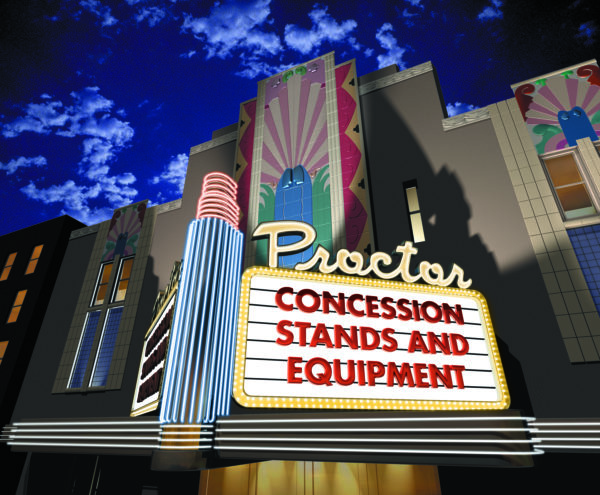

Share this post